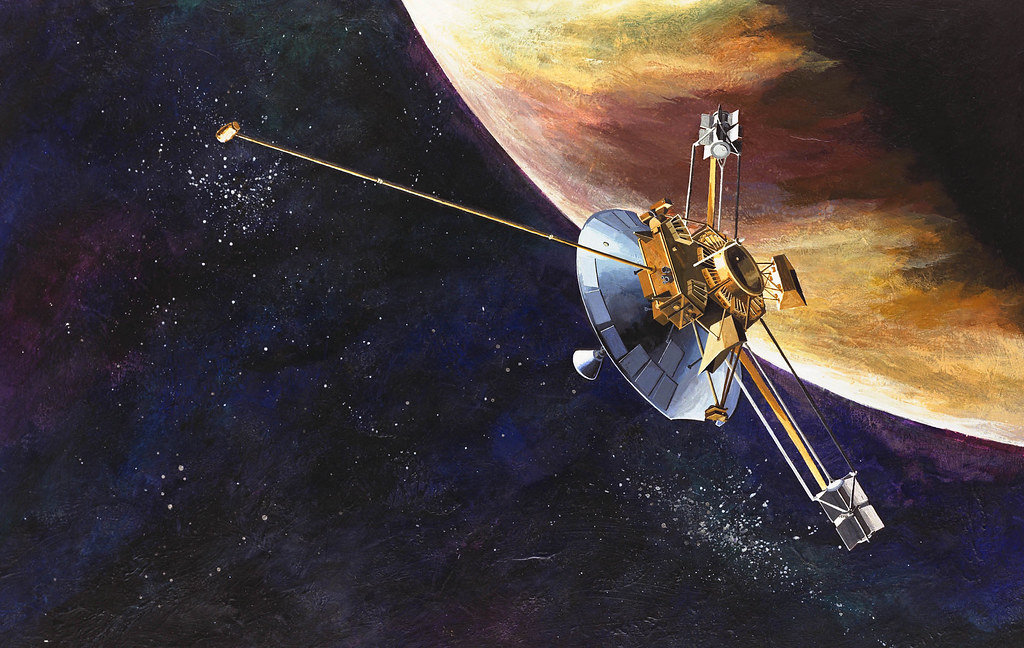The history of the five NASA spacecrafts that travel beyond the Solar System
The history of space exploration gives rise to fascinating stories and invites an overflowing imagination, especially at its furthest limits.
In addition to knowing our planet, our natural satellite and our star, space exploration has served to discover the Solar System and what lies beyond. The expression "beyond" has moved many explorations throughout history, but never has an exploration gone as far as that carried out by five NASA spacecraft.

Pioneer 10
The first of these spacecrafts was Pioneer 10, launched on March 2, 1972 and whose mission was to explore Jupiter. In 1983 it was the first man-made object to surpass the orbit of Neptune, today the last planet in our system, after Pluto lost that condition in 2006. The last signal from the Pioneer 10 probe was recorded on January 23, 2003. It was then 12,000 million kilometers from Earth. You can see here the NASA page about this spacecraft, which is currently navigating through space to the outside of the Solar System, heading for the star Aldebaran, where it could arrive in two million years.

Pioneer 11
Pioneer 11 was launched on April 6, 1973. Its targets were Jupiter and Saturn. On February 23, 1990 it crossed the orbit of Neptune, being the fourth space vehicle to cross it. The last signal from this spacecraft was received on November 24, 1995. It is currently sailing out of the Solar System. You can see here the NASA page about this probe.

Voyager 1
Voyager 1 was launched on September 5, 1977. It flew by Jupiter and Saturn and several of their satellites, discovering the rings of Jupiter and three new satellites of Saturn: Prometheus, Pandora and Atlas. On February 17, 1998, it became the farthest man-made object, after exceeding the distance reached by Pioneer 10. On January 1, 1990, it began its interstellar mission. It entered interstellar space on August 1, 2012. 44 years after its launch, the spacecraft is still operational and is today the furthest man-made object from Earth. You can see here the NASA page on this spacecraft, which includes an interactive image that shows its distance and its current perspective with respect to the Earth, and also a three-dimensional image of the design of the probe.

Voyager 2
Voyager 2 was launched on August 20, 1977. Between 1979 and 1989 it flew over Jupiter, Saturn, Uranus and Neptune, becoming the only spacecraft to have flown over the four giant planets of the Solar System, and the first to fly over Uranus and Neptune. Like its sister spacecraft, Voyager 1, six years earlier, Voyager 2 entered interstellar space on December 10, 2018. Like Voyager 1, 44 years after its launch, the spacecraft is still active and sending data about its interstellar flight. You can see here the NASA page about this spacecraft.

New Horizons
New Horizons is the latest of NASA's five interstellar spacecraft. It was launched on January 19, 2006, in order to fly over Pluto and its satellite Charon, becoming in 2015 the first spacecraft to fly over Pluto. He also observed the other four satellites of the planetoid: Styx, Nix, Kerberos and Hydra. On January 1, 2019, it became the first spacecraft to fly over an object in the Kuiper Belt, the disk that surrounds the Solar System. That object was the Ultima Thule asteroid, currently named Arrokoth3 and MU69, which had been discovered on June 26, 2014 by the Hubble Space Telescope. Currently this probe is still active and is expected to continue exploring other objects in the Kuiper Belt. You can see here the NASA page about this spacecraft.
On these lines you can see the trajectories followed by each of the five ships (click on the image to enlarge). Below, you can see an interesting video published a month ago by the Kosmo channel on YouTube that shows more widely the history and discoveries of these spacecrafts:
---
Images: NASA.
|
Don't miss the news and content that interest you. Receive the free daily newsletter in your email: Click here to subscribe |
- Lo más leído
- A former secret submarine base in Estonia and its important role in the Cold War
- An old Soviet military plane abandoned from 1971 on a Russian island near Alaska
- Sabbione: a beautiful Swiss town that looks like something out of 'The Lord of the Rings'
- The Iwo Jima Japanese military tunnels and why there are so many bottles there
- The man who lived for more than 20 years in a railway tunnel beneath New York
- The supermassive black hole of Phoenix A, the biggest known light-devouring monster
- The 'Bomber Glacier': The wreckage of a B-29 on a remote mountain of Alaska

 ES
ES






Opina sobre esta entrada: